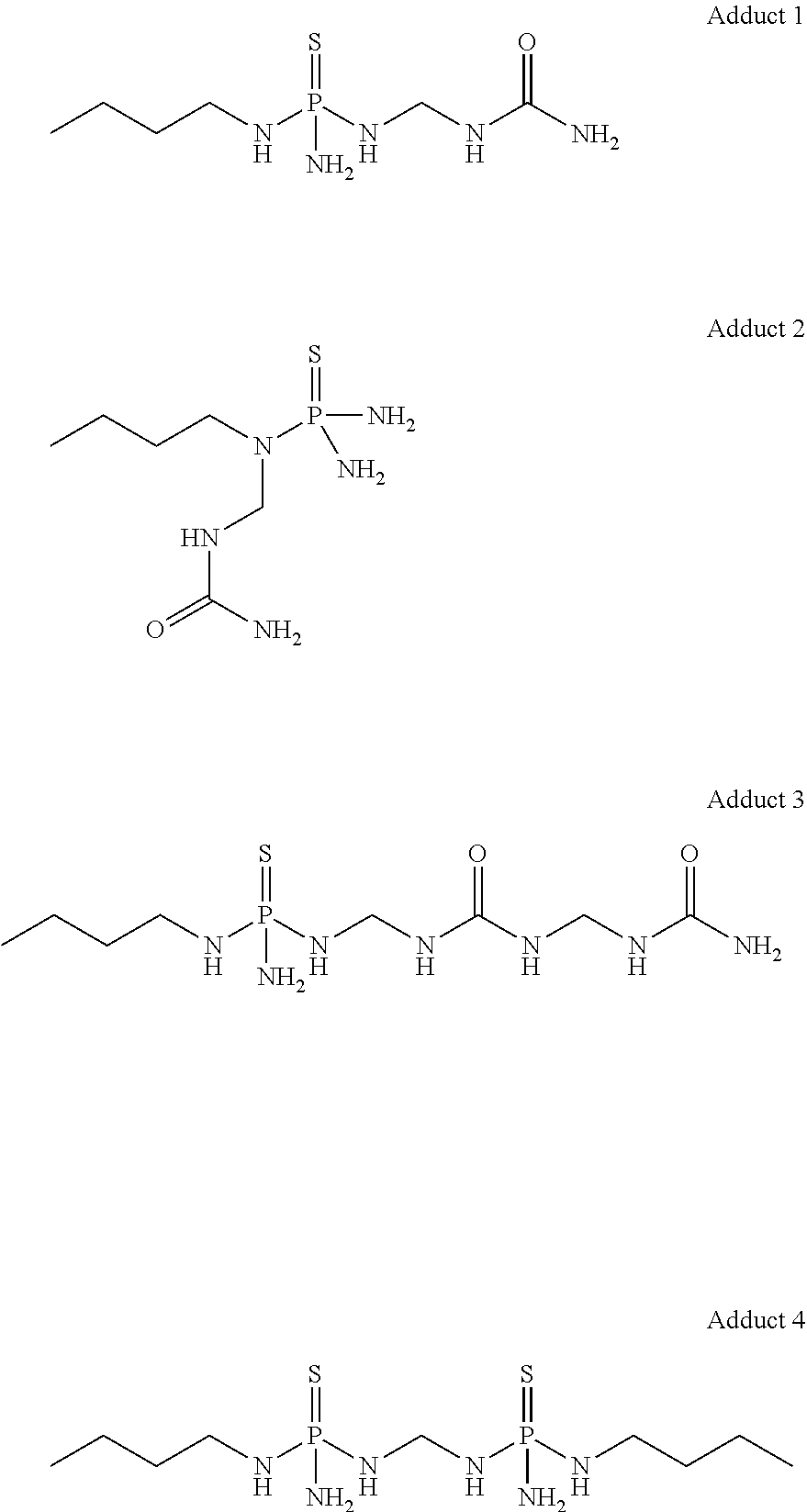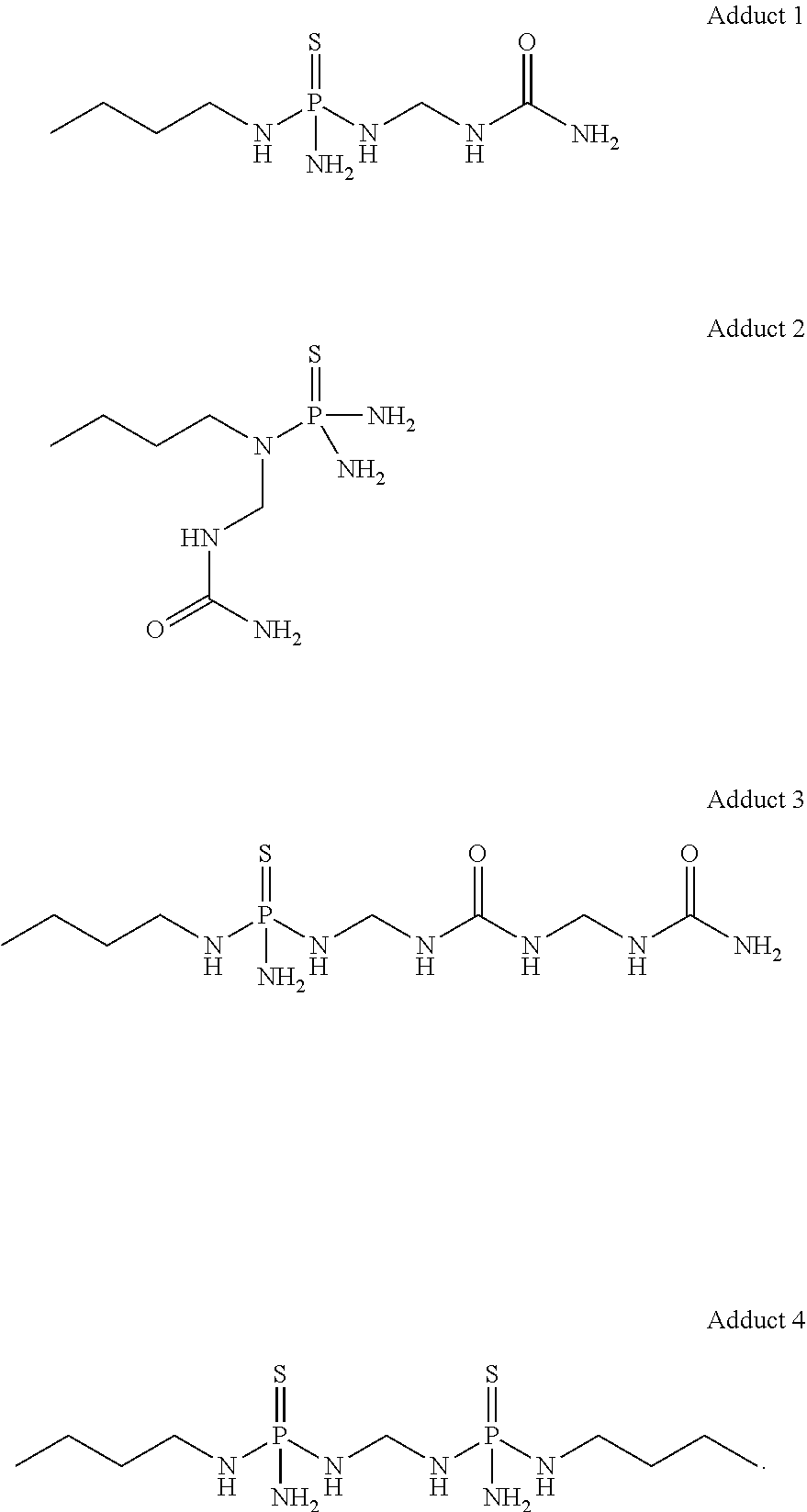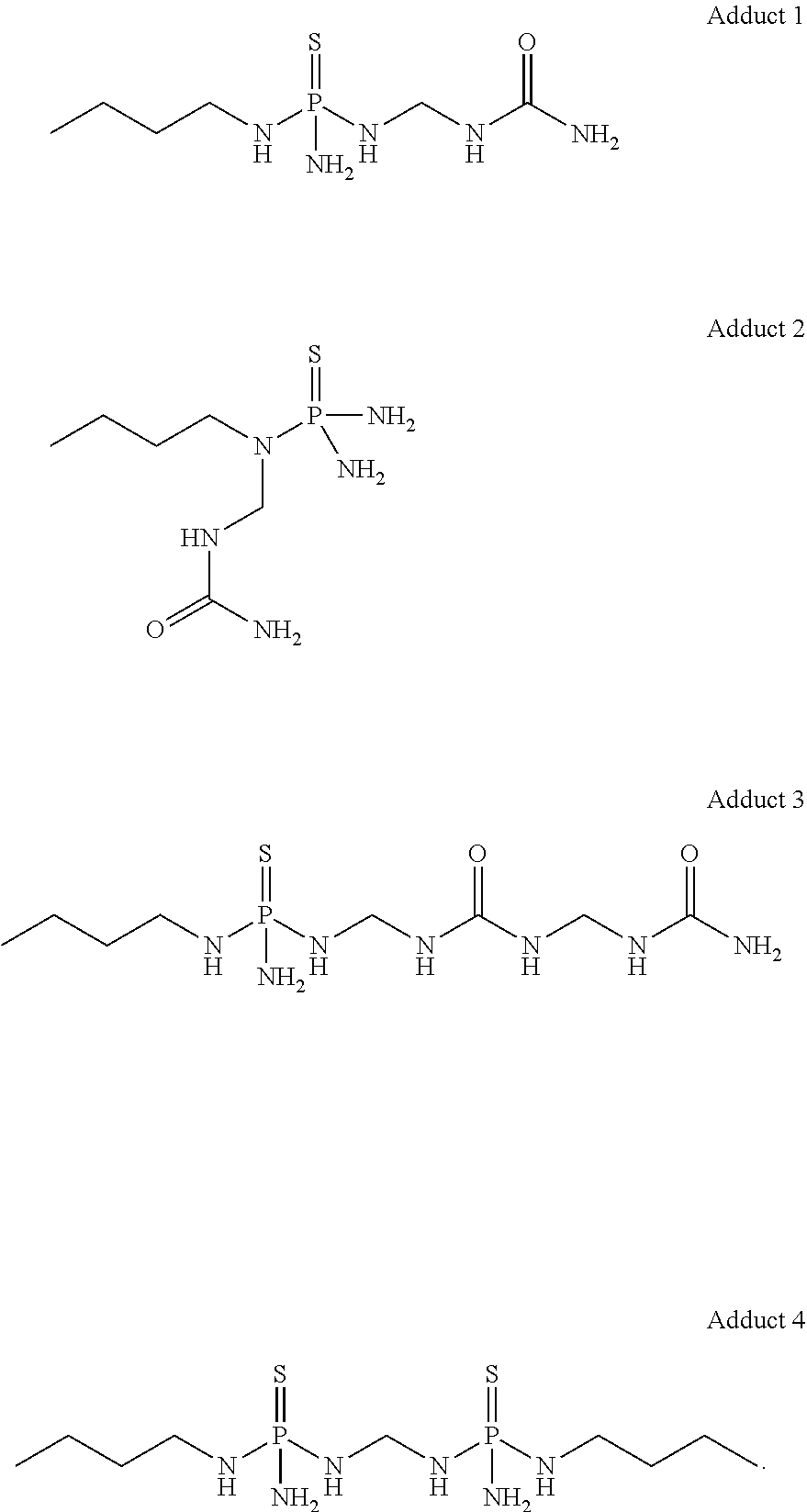Low temperature stable formulations of urease inhibitor-containing compositions
- Summary
- Abstract
- Description
- Claims
- Application Information
AI Technical Summary
Benefits of technology
Problems solved by technology
Method used
Image
Examples
example 1
Synthetic Preparation of Urease Inhibitor Adduct Solid Material
[0065]To a 50 L-jacketed reactor equipped with overhead stirring and thermocouple probe were charged NBPT (9.1 kg) and ethyl acetate (14.66 kg). To the fine white suspension was added urea (3268.6 g, 54.4 moles). Formalin (3268.3 g, 54.4 moles; 50% solution) was added to the suspension. The reaction was stirred overnight at 23° C. jacket temperature. The solvent was evaporated, and the product was further dried to constant weight, to afford a honey-like material that constituted urease inhibitor adduct solid material.
example 2
Synthetic Preparation of Liquid Formulation (Sample Entry A3)
[0066]Urease inhibitor adduct solid material (40 wt. %) was charged into a glass jar equipped with a stir bar. Subsequently, NBPT (30 wt. %) and dye (0.67 wt. %) were added, followed by DMSO (29.33 wt. %). The mixture was stirred at 50° C. to ensured that urease inhibitor adduct solid material was fully dissolved in the solution. This mixture was stirred for 3 h.
[0067]Formulations in the following table were prepared according to Examples 1 and 2 using appropriate amounts of urease inhibitor adduct solid material and the remaining components.
Wt. % ofureaseinhibitorWt. % ofFreezing PointEntryFormulationadductDMSO(° C.)A130 wt. % NBPT,069.33−11.50.67% dyeA230 wt. % NBPT,2049.33−16.00.67% dyeA330 wt. % NBPT,4029.33−12.50.67% dyeA430 wt. % NBPT,609.33−8.50.67% dye
example 3
Freeze Point Measurement Method
[0068]Freeze point determination was performed according to ASTM method D2386-03.[0069]1. Measure out 25±1 mL of the solution and transfer it to the clean, dry, jacketed sample tube. Close the tube tightly with the cork holding the stirrer, thermometer, and moisture proof collar and adjust the thermometer position so that its bulb does not touch the walls of the tube flask and is approximately in the center. The bulb of the thermometer should be 10 to 15 mm from the bottom of the sample tube.[0070]2. Clamp the jacketed sample tube so that it extends as far as possible into the vacuum flask containing the cooling medium. The surface of the sample should be approximately 15 to 20 mm below the level of the coolant. Unless the medium is cooled by mechanical refrigeration, add solid carbon dioxide as necessary throughout the test to maintain the coolant level in the vacuum flask.[0071]3. Stir the solution continuously, moving the stirrer up and down at the ...
PUM
 Login to View More
Login to View More Abstract
Description
Claims
Application Information
 Login to View More
Login to View More - Generate Ideas
- Intellectual Property
- Life Sciences
- Materials
- Tech Scout
- Unparalleled Data Quality
- Higher Quality Content
- 60% Fewer Hallucinations
Browse by: Latest US Patents, China's latest patents, Technical Efficacy Thesaurus, Application Domain, Technology Topic, Popular Technical Reports.
© 2025 PatSnap. All rights reserved.Legal|Privacy policy|Modern Slavery Act Transparency Statement|Sitemap|About US| Contact US: help@patsnap.com



